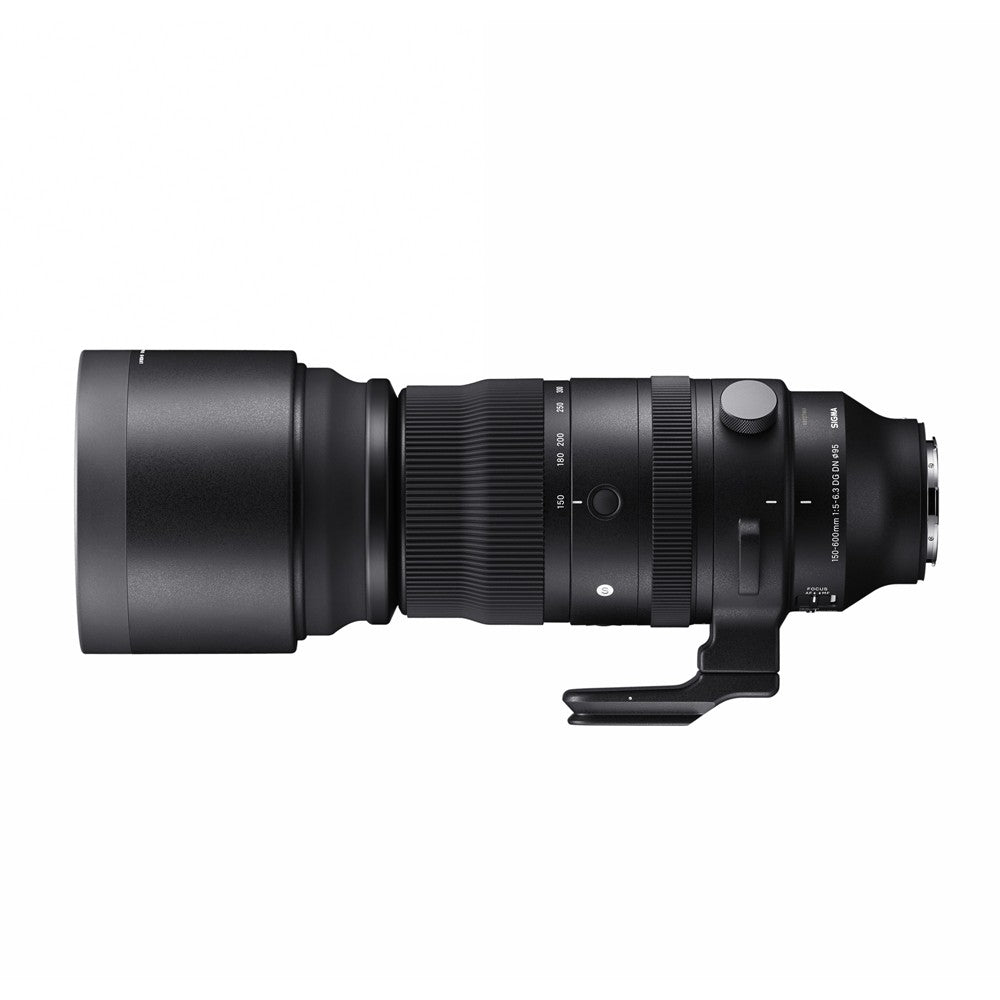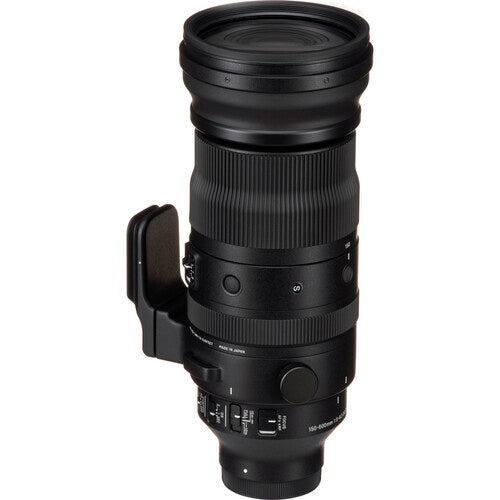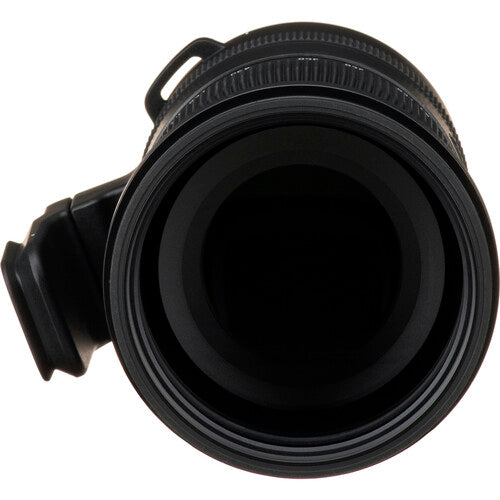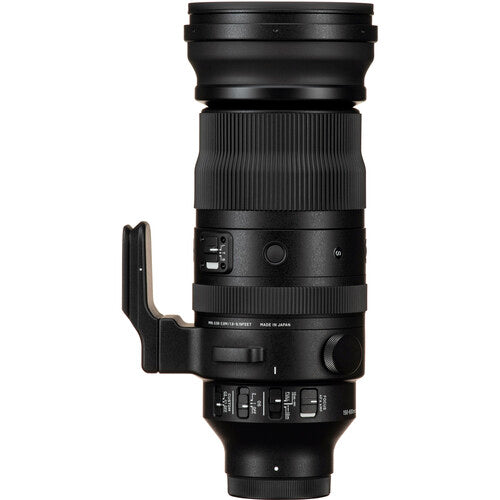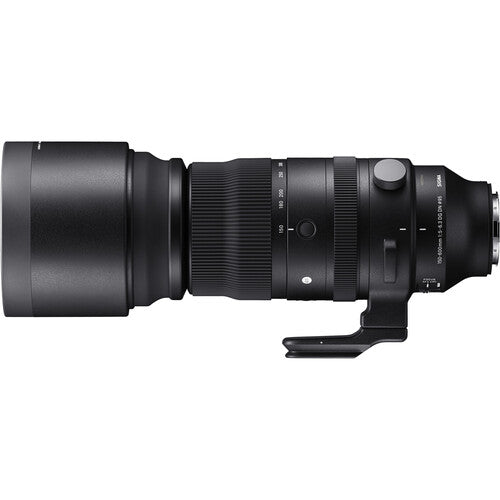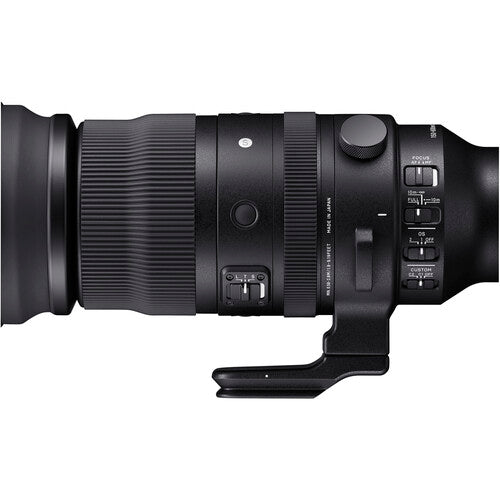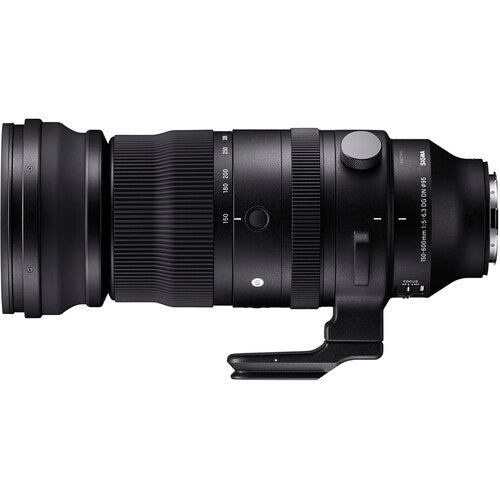Product Description
Introducing the Sigma 150-600mm F5-6.3 DG DN OS
Discover the epitome of sharpness, speed, and portability with the Sigma 150-600mm F5-6.3 DG DN OS, a long-telephoto zoom lens designed for mirrorless cameras.

Ultra-Telephoto Power in a Compact Package
Crafted for professional sports, wildlife, aviation, and motorsport photography, this ultra-telephoto zoom lens from Sigma's Sports lineup boasts a dust- and splash-resistant structure and a specialized water and oil-repellent coating on the front element, ensuring optimal performance in outdoor environments.

Featuring a sophisticated optical design comprising 25 elements, including 4 FLD and 2 SLD elements, this lens delivers exceptional image quality with minimal chromatic aberration and controlled flare. With a wide F5-6.3 maximum aperture, it enables fast shutter speeds in low light and shallow depth-of-field for subject isolation.

The lens is equipped with advanced features such as a two-mode Optical Stabilizer, rotatable tripod socket, torque zoom function, three AFL buttons, two custom modes, focus limiter, and dual-action zoom, making it one of the most versatile and popular ultra-telephoto mirrorless zooms available.

Outstanding Build Quality
The exterior barrel of the 150-600mm lens is meticulously crafted from aluminium alloy and Thermally Stable Composite (TSC) polycarbonate, striking a balance between strength and weight. The rubberized zoom and focus rings ensure comfortable operation, while the Zoom Lock switch allows secure positioning at various focal lengths. Additionally, the included lens hood features a rubber grip for easy handling.

Designed to withstand the rigours of heavy professional use, the lens features a dust and splash-resistant structure with special sealing at critical points, including the mount connection, manual focus ring, zoom ring, and cover connection. The tripod collar and foot provide better balance when mounted on a tripod and can be rotated for seamless switching between portrait and landscape orientation.

The durable brass mount, surrounded by a rubber seal, effectively keeps out dust and moisture, enhancing the lens's longevity.

Professional Feature Set
The lens offers a comprehensive range of controls, including an AF/MF switch, AFL button, Optical Stabilizer switch, and Custom Mode switch, allowing photographers to tailor settings to their preferences. The Focus Limiter enables faster and more accurate operation, particularly in complex shooting scenarios.

Introducing the Zoom Torque function, photographers can adjust the resistance of the zoom ring for optimal control. The Dual Action Zoom allows for precise zooming with the ring or rapid adjustments by pushing or pulling the lens, ideal for capturing fast-moving subjects. The Optical Stabilizer offers two modes for general shooting and panning, providing up to 6.5 stops of stabilization for sharp images in any situation.

High-Performance Optics
The 150-600mm F5-6.3 DG DN OS | S delivers outstanding optical quality, with exceptional rendering of detail across all focal lengths and apertures. Its advanced optical design, comprising 25 elements in 15 groups, including 2 SLD and 4 FLD elements, ensures sharpness, minimal aberrations, and reduced flare and distortion. Advanced coatings further enhance contrast and colour reproduction, resulting in stunning images with rich colours and deep blacks.



At Home in Extreme Conditions
Thanks to its weather-sealed design and TSC construction, the Sigma 150-600mm F5-6.3 DG DN OS | Sports can withstand harsh environments without compromising performance. The lens's rugged build, combined with its thermal stability, ensures consistent performance in extreme temperatures, making it ideal for heavy professional use.



Lightning-Fast AF Tracking
Equipped with an AF actuator controlled by a stepping motor, the lens offers fast, quiet autofocus with precise tracking, even on moving subjects. A high-precision magnetic sensor ensures accurate positioning, particularly impressive for an ultra-telephoto lens with significant focus lens movement.

Excellent Close-Focusing Ability
With a magnification ratio of 1:2.9 and a minimum focusing distance of just 58cm at 180mm, the lens allows for detailed close-up shots of small subjects, adding versatility to its long-telephoto capabilities.

Compatible with Teleconverters
The Sigma 150-600mm F5-6.3 DG DN OS | S is compatible with Sigma's teleconverters, including the TC-1411 1.4x converter (producing 84-840mm) and the TC-2011 2x converter (producing 120-1200mm), both of which maintain full autofocus functionality.

Payment & Security
Your payment information is processed securely. We do not store credit card details nor have access to your credit card information.

